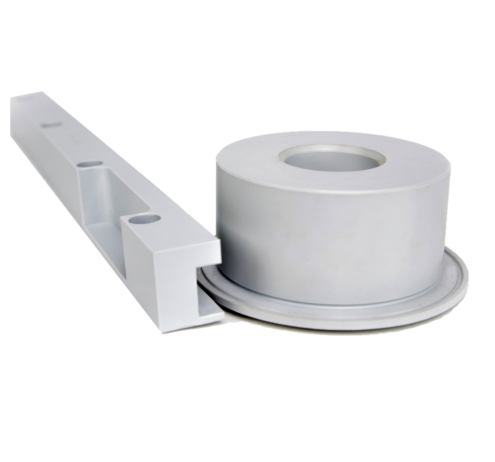PET-TX

PET-TX Overview
What is the Material: PET-TX is a semi-crystalline material filled with solid lubricant.
Key Material Features: This material is beneficial in applications requiring lower friction, while maintaining properties of other PET materials including toughness, chemical resistance, abrasion resistance, and low moisture absorption.
Other Considerations: This material maintains more strength at higher temperatures than nylon and acetal. In addition, PET lacks center-line porosity, largely found in acetal homopolymer. Also this material is attacked by hot water/steam.
Physical
| Property | Value | Typical ASTM Test |
|---|---|---|
| Chemical Designation | (PET) Polyethylene Terephthalate | |
| Trade Names (®, ™) | Ertalyte TX | |
| Filler | Solid Lubricant | |
| Color | Grey | |
| Density (g/cm^3) | 1.44 | D 792 |
Mechanical
| Property | Value | Typical ASTM Test |
|---|---|---|
| Modulus of Elasticity (Tensile Test) (psi) | 500000 | D 638 |
| Tensile Strength at Yield (psi) | 10500 | D 638 |
| Elongation at Break (%) | 5 | D 638 |
| Flexural Strength (psi) | 14000 | D 790 |
| Modulus of Elasticity (Flexural Test) (psi) | 360000 | D 790 |
| Compression Strength: 10% Strain (psi) | 15250 | D 695 |
| Compression Modulus (psi) | 400000 | D 695 |
| Impact Strength (Izod) (ft-lbs/in) | 0.400 | D 256 |
| Hardness (R) | 126 | D 785 |
| Hardness (D) | 84 | D 785 |
| Hardness (M) | 96 | D 785 |
| Coefficient of Friction (Kinetic, 40 psi, 50 fpm) | 0.19 | D 3702 |
| Wear (K) Factor (in^3-min/ft-lbs-hr) (Against Steel, 40 psi, 50 fpm) | 3.50E-9 | D 3702 |
Thermal
| Property | Value | Typical ASTM Test |
|---|---|---|
| Melting Point (°F) | 491 | D 3418 |
| Deflection Temperature (°F) (264 psi) | 180 | D 648 |
| Service Temperature Continuous (°F) | 210 | |
| Thermal Expansion (CLTE) (in/in/°F) | 4.50E-5 | D 696 |
| Thermal Conductivity (BTU-in/hr-ft^2-°F) | 1.90 |
Electrical
| Property | Value | Typical ASTM Test |
|---|---|---|
| Specific Surface Resistance (Ω/square) | 1.00E13 | D 257 |
| Dielectric Strength (V/mil) | 533 | D 149 |
| Dissipation Factor (1MHz) | 0.020 | D 150 |
| Dielectric Constant (1MHz) | 3.6 | D 150 |
Other
| Property | Value | Typical ASTM Test |
|---|---|---|
| Moisture Absorption (%) (Saturated) | 0.47 | D 570 |
| Flammability | HB |
The data stated are typical values intended for reference and comparison purposes only. The data should not be used as a basis for design specifications or quality control. The information is provided as a guide to the best of our knowledge and given without obligation or liability. Testing under individual application circumstances is recommended.
